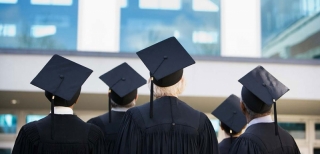Higher education in India A promising road ahead
Being the 7th biggest country in the world in terms of area, Indian education has undergone a paradigm shift in recent years. Let’s delve deeper into the topic.
Higher education in India - In a country which is known for its world-class IIMs and IITs, education system in India is largely perceived as a token to success on both personal and professional front. In recent times, the service industry in India has become a driver of growth. The recent boom in the BPO/KPO sector is a testament of the same. The off-shoring trend is still prevalent and it is the liberal education system of India that paves a bright future for professionals.India is primarily known for its vast pool of technical workforce, a considerable proportion of which gets employed in developed countries, particularly in the west. There is a strong pressure on Indian education system to continue producing a very talented workforce to meet the need of highly skilled manpower.
# An active academic and political ecosystem is a key aspect affecting the fate of the nation in regard to the rise of the knowledge sector
The Educational ecosystem in India which functions at all believable levels from pre-school to post-doctoral is of colossalscopes. According to a World Bank report there are more than 7,40,000 formal schools; over 3.6 million teachers are working on full time basis; there are more than 175 Universities handling under graduate and post graduate courses and nearly 6000 colleges affiliated to these universities.Indian education system, which currently the third largest in the world, is all set to supersede the United States in next 2 years and China in next decade. The only concern is that this education system has a complex structure combined with various hindrances, still has great possibilities.
By the year 2030, India will be amongst the youngest countries in the world. With around 140 million people in the college-going age category, one in every four graduates in the world will be the result of the Indian education system. Higher education in India has witnessedremarkable growth since its independence in 1947.

University Grants Commission (UGC), by conceptualizing programmes and running different schemes through academic, administrative and financial aid, has propelled the growth and development of Indian higher education.
In this ever-evolving landscape, introduction of private universities is game changing. Several new institutions of medicine, science, technology and others have been brought in. As many universities are is poor shape, the gap is filled by various private institutions. It is the need of the hour to ensure that these universities have sufficient faculty, research support, career-centric curriculum, and great infrastructure among others.
A big concern for the country is the development of employable workforce to leverage the demographic advantage. According to a recent report by NASSCOM, just 24% of technical graduates and nearly 15% of other graduates are capable of employment in the IT/ITES industry. Another study carried out on 800 management graduates across various cities in India disclosed that only 23% of them are fit for employment. Isn’t this shocking?
This clearly indicates that there is an immediate need of a healthy and mutually-beneficial associated between industry and academia. At the same time, there is a need to shift from ‘general model’ to ‘learner-centered’ system of education.
Some of the improvement suggestions made by the domain experts include:
# Promoting Individuality
Albert Einstein once quoted, “Everyone’s a genius. But if you judge a fish on its ability to climb a tree, it will live its whole life believing that it is stupid.” With difference in abilities, aptitude and interest of a particular scholar and the societal stresses of expertise and specialism, the homogeneous testing and curriculum does not give much possibility for the students to associated with the world of work and wages. Creativity that has cultivated our inspirations in almost all of life’s passions and interests drops dead at standardized test. The prevailing educational system demands conformism and rewards foreseeable actions, both intellectually and expressively.
# Tech-Savvy Ways of Teaching
The emerging technologies enablegreat opportunities for growth in all directions of life. The concentration should not be on installing hardware but developing fresh, high-quality content such as smart teaching systems and gears that will assist students to sharpenelementary skills like reading and mathematics, and creating content in various Indian languages. Free high-speed internet connections can be given to all schools and universities in a simple way by which the government could compensate internet service providers unswervingly.








